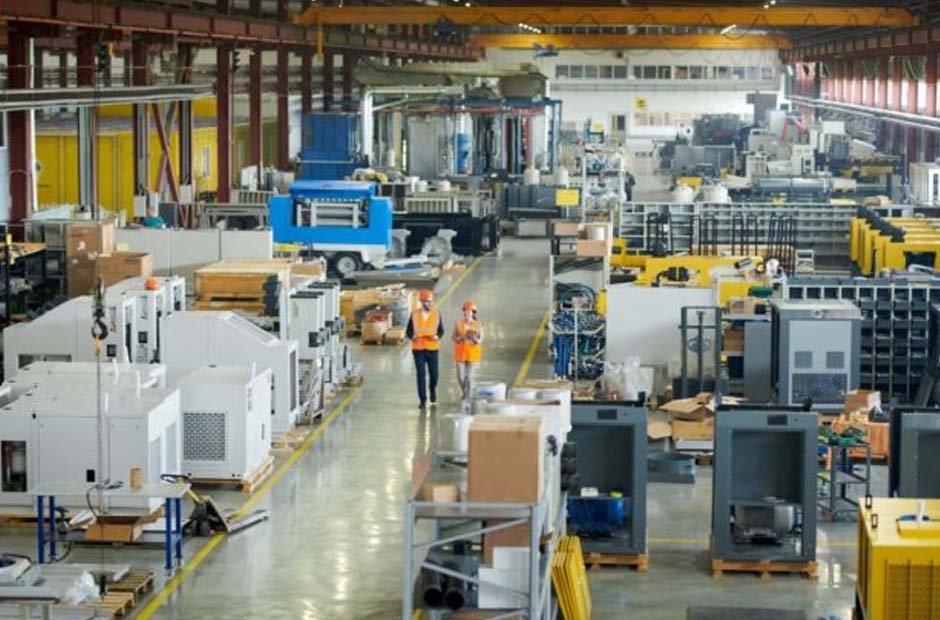In the industrial symphony that is a factory floor, cleanliness plays the first violin. It’s not merely about aesthetics; it’s about efficiency, safety, and the health of your workforce. Let’s explore how maintaining a pristine environment can elevate your manufacturing output to the next level. Cleanliness directly correlates with fewer machine breakdowns, leading to higher uptime and productivity. It fosters a positive work environment, enhancing employee morale and reducing turnover. Ultimately, a clean factory is your first step towards operational excellence.
Understanding the Basics
Why does a clean factory floor matter? It’s simple. A clean environment minimizes the risks of accidents, ensures machinery operates efficiently, and keeps your workforce healthy and motivated. The absence of clutter and spills reduces the likelihood of injuries, creating a safer workspace for everyone. Furthermore, a well-maintained factory floor can significantly enhance the longevity of your equipment, saving costs on repairs and replacements. The challenge lies not in understanding its importance but in implementing consistent practices that uphold this cleanliness amid the bustling activity of production lines.
Setting Up for Success
Creating a culture of cleanliness begins with buy-in from every level of your organization. It’s about instilling pride in a clean workspace and ensuring everyone understands their role in maintaining it. Consider your factory’s layout; efficient organization minimizes clutter and simplifies cleaning efforts. An intuitive layout not only facilitates easier cleaning but also streamlines workflow, reducing wasted time and effort. Leadership should lead by example, actively participating in cleanliness initiatives to reinforce their importance. Regular audits can help identify areas for improvement and ensure standards are met consistently.
Implementing a Cleaning Schedule
A robust cleaning schedule doesn’t interfere with production; it complements it. Break down tasks by frequency—daily, weekly, monthly—and assign them in a way that balances the workload across shifts. This systematic approach ensures no area is overlooked and cleaning becomes a routine part of operations rather than an afterthought. Flexibility in the schedule allows for unexpected cleaning needs without disrupting the workflow. Communication of the cleaning schedule is crucial, ensuring everyone knows their responsibilities and when tasks need to be completed. Integrating cleaning tasks into the daily routine helps reinforce the importance of a clean environment.
Choosing the Right Cleaning Equipment and Supplies
The right tools can make all the difference. From heavy-duty vacuums to industrial-grade disinfectants, investing in quality cleaning supplies ensures efficiency and effectiveness. Don’t overlook the importance of PPE; protecting your employees during cleaning tasks is paramount. High-quality equipment not only performs better but also lasts longer, providing a better return on investment. Training on the proper use and maintenance of cleaning equipment ensures it’s used effectively and safely. Regularly reviewing and updating your cleaning supplies inventory can help identify opportunities for improvement and ensure you are using the most effective products available.
Dust isn’t just a nuisance; it’s a hazard. A high-efficiency dust collection system is essential for maintaining air quality and protecting both machinery and personnel. Tailoring the system to your specific needs—whether it’s a centralized system for woodworking dust or localized extractors for metalworking—can significantly impact your factory’s overall cleanliness and productivity. Regular maintenance of your dust collection system ensures it operates at peak efficiency, preventing potential malfunctions that could compromise air quality. Educating employees about the importance of dust control can encourage them to take proactive steps to maintain a clean environment. Moreover, investing in the latest dust collection technology can significantly reduce the amount of airborne particles, creating a healthier workplace.
Advanced Cleaning Techniques and Technologies
Embrace innovation. Automated cleaning robots, IoT devices for real-time monitoring of cleanliness and air quality—technology is transforming how factories maintain cleanliness. These solutions not only enhance efficiency but also allow for more precise tracking and improvement of cleaning processes. Adoption of such technologies can also reduce the physical strain on workers, making the cleaning process less labor-intensive. By leveraging data collected from IoT devices, factories can identify problem areas more quickly and address them proactively. Moreover, integrating advanced cleaning technologies can serve as a testament to your commitment to providing a safe and efficient workplace, potentially attracting more skilled workers.
Waste Management and Recycling Practices
Effective waste management is a cornerstone of a clean factory floor. By implementing structured recycling practices and ensuring waste is promptly removed from production areas, factories can significantly reduce clutter and potential hazards, contributing to a more productive environment. Encouraging employees to participate in recycling initiatives can foster a sense of community and shared responsibility for the environment. Designating specific areas for waste and recycling helps streamline the disposal process, making it easier for employees to comply. Regular training on waste management practices ensures everyone understands how to sort and dispose of materials properly, reducing contamination and increasing the efficiency of recycling programs. Additionally, engaging with sustainable waste management companies can provide more environmentally friendly disposal and recycling options.
Training and Incentivizing Staff
Education is key. Regular training sessions on new protocols and equipment usage can empower your staff to maintain high standards of cleanliness. Incentive programs, rewarding teams for achieving cleanliness goals, foster a collective responsibility toward maintaining a clean and efficient workspace. Recognizing and celebrating achievements in cleanliness can motivate staff to maintain high standards. Incorporating cleanliness and maintenance objectives into personal performance reviews can also emphasize their importance. By providing ongoing support and resources for cleanliness initiatives, you can ensure that these practices are sustained in the long term.
Monitoring Progress and Continuous Improvement
What gets measured gets improved. By regularly tracking the effectiveness of your cleaning and maintenance programs, you can identify areas for enhancement and make data-driven decisions to refine your processes. Continuous improvement should be the goal, ensuring your factory remains at the forefront of operational efficiency. Implementing a feedback loop where employees can suggest improvements to cleaning protocols can foster a culture of continuous improvement. Regularly revisiting and revising cleaning schedules and practices in response to new challenges or changes in the factory layout can help maintain optimal cleanliness. Leveraging technology to track cleaning activities and outcomes can provide valuable insights into the effectiveness of your cleaning strategies and highlight areas for further improvement.
Conclusion
A clean factory floor is more than just a shiny facade; it’s the foundation of a productive, safe, and efficient manufacturing operation. By embracing the strategies outlined in this guide, you can transform your factory into a model of cleanliness and productivity. Start today, and watch as the benefits unfold in improved efficiency, safety, and employee satisfaction. Remember, a clean factory is a successful factory. With dedication and continuous effort, your factory floor can become a benchmark of industrial hygiene and efficiency.
















